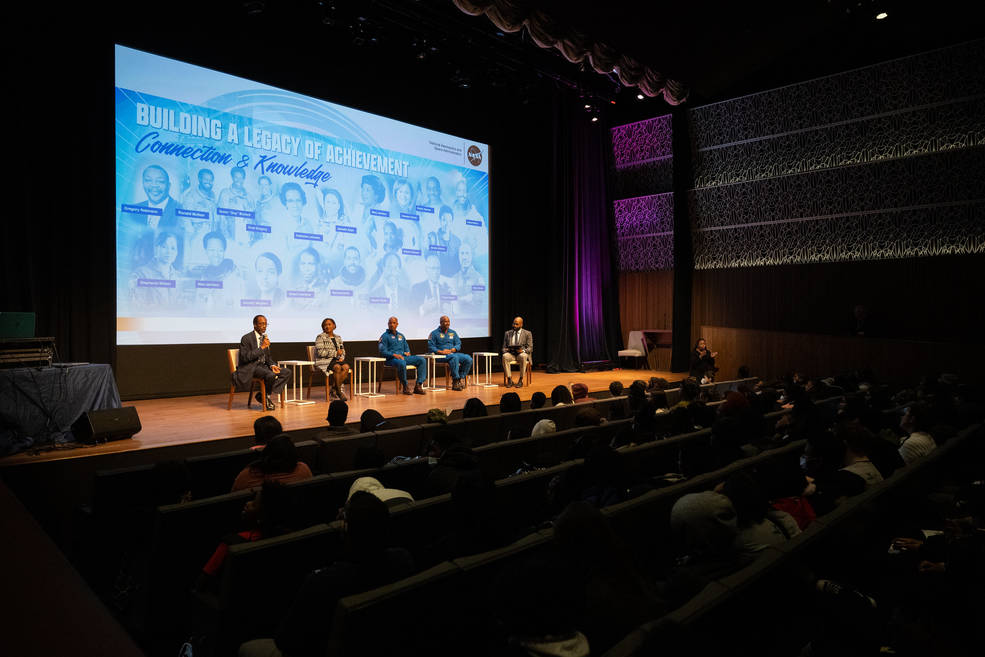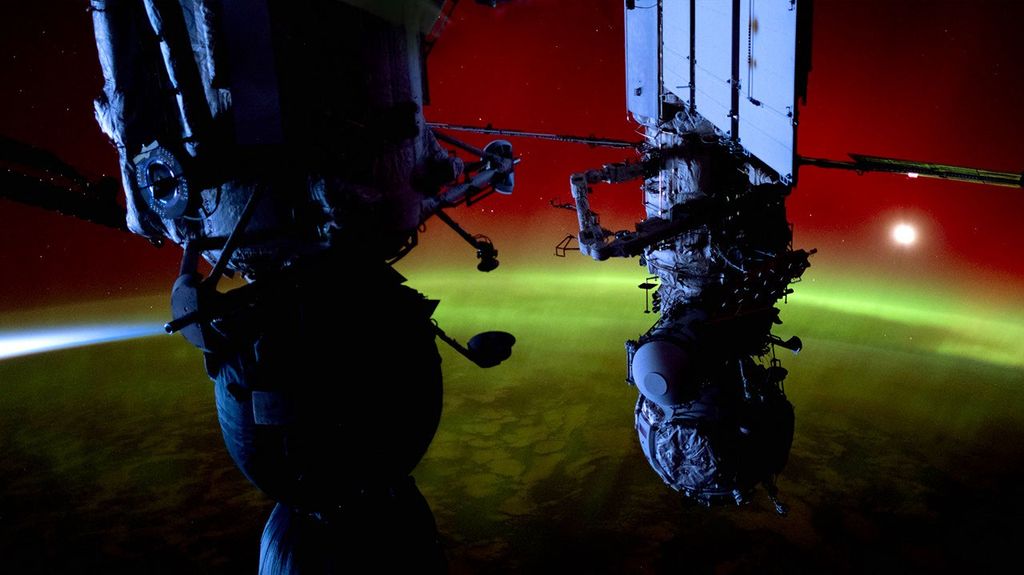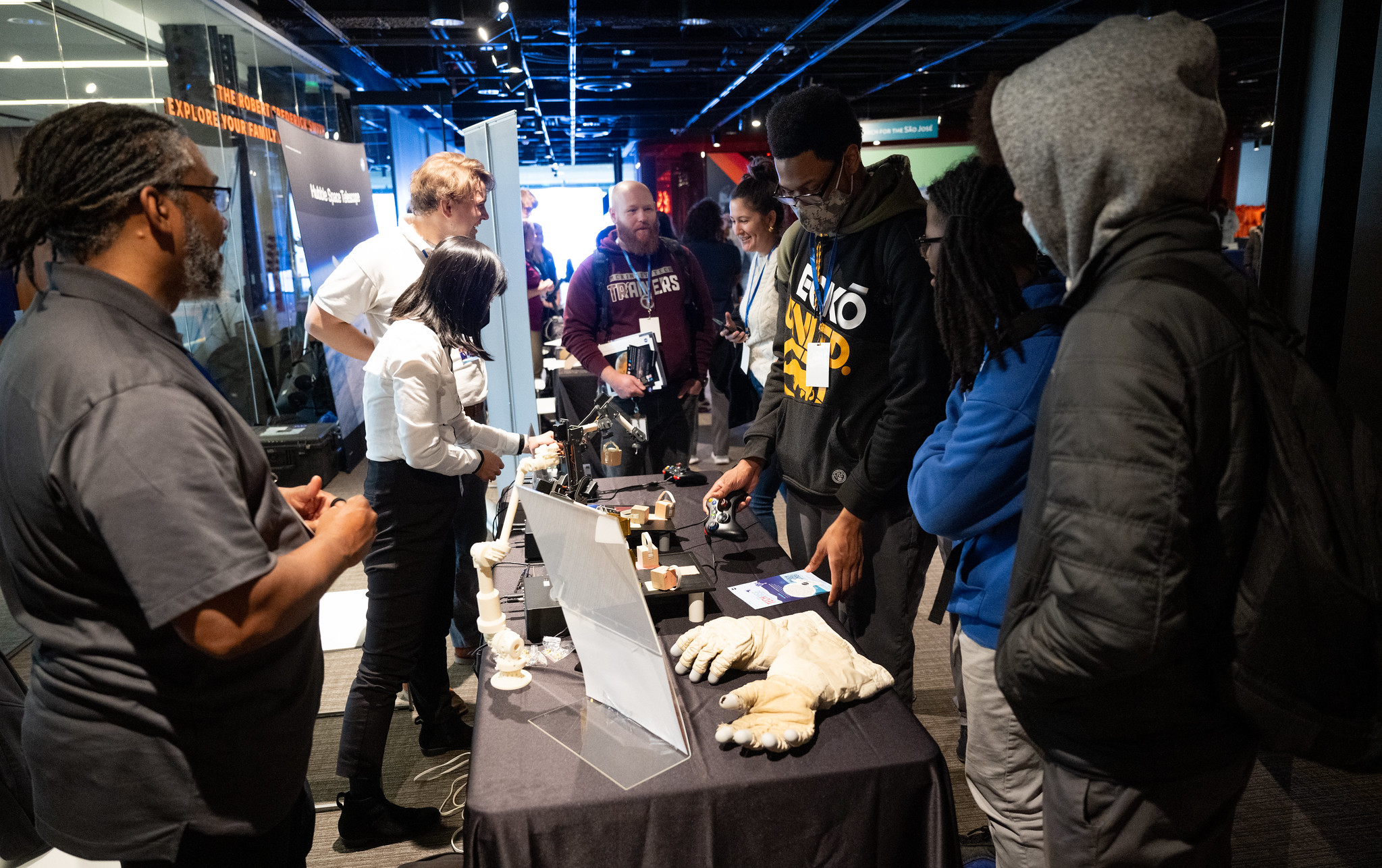
NASA and the Smithsonian National Museum of African American History and Culture co-hosted an event Feb. 10 to spotlight the contributions of Black Americans at NASA and in the science, technology, engineering, and mathematics (STEM) fields.
More than 300 middle and high school students and teachers from across Washington and Virginia were invited to meet NASA astronaut Victor Glover and former NASA astronaut Leland Melvin. Attendees also heard from agency leadership including NASA Administrator Bill Nelson, Johnson Space Center Director Vanessa Wyche, and Langley Research Center Director Clayton Turner.
“NASA is an amazing place, but it is not an impossible place,” said Langley Center Director Clayton Turner. “We need you to join us, our industry partners, and academia on this journey. We want to continue to reach new heights to reveal the unknown for the benefit of humankind.”
Students participated in hands-on STEM activities – made possible by NASA’s Mission Directorates, program offices, and the agency’s Team Engaging Affiliated Museums and Information Institutions (TEAM II) program. To boot, disc jockey Mark Branch, also known as DJ Scientific, provided the soundtrack for the day. Branch is an employee at NASA’s Goddard Spaceflight Center in Greenbelt, Maryland.
“Today was very inspirational. I never thought about being an astronaut but after today I know I can go beyond that,” said Sierra Williams a seventh grader at Cesar Chavez Public Charter School in Washington. “NASA showed me that I can go beyond any limits.”
The event was a collaboration between the agency’s African American employee resource groups and the Smithsonian. Activities were curated to inspire future generations of engineers, mathematicians, astronauts, scientist, and change makers. As part of the day, students also participated in a panel conversation with NASA leaders where they asked questions and learned first-hand how to navigate a career in STEM.
“There are so many opportunities at NASA,” said Johnson Space Center Director Vanessa Wyche. “From design engineers to the people producing food for astronauts to consume while in orbit, accountants, and doctors – it takes a variety of backgrounds and disciplines to achieve our missions. All of you are part of what space is. I hope you think about NASA as a career and join us on our journey.”
NASA honors the achievements and contributions of Black American in STEM and our nation each day of the year. For more on how Black Americans have contributed to NASA’s work and mission success over the years, see the stories of some of NASA’s brightest stars.
NASA works to explore the secrets of the universe and solve the world’s most complex problems, which requires creating space for all people to participate in and learn from its work in space. Providing access to opportunities where young minds can be curious and see themselves potentially at NASA and beyond is how the agency will continue to inspire the next generation of scientists, engineers, astronauts, and more.
Coverage of the event is available at:
-end-




























